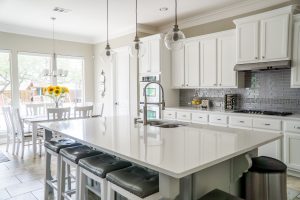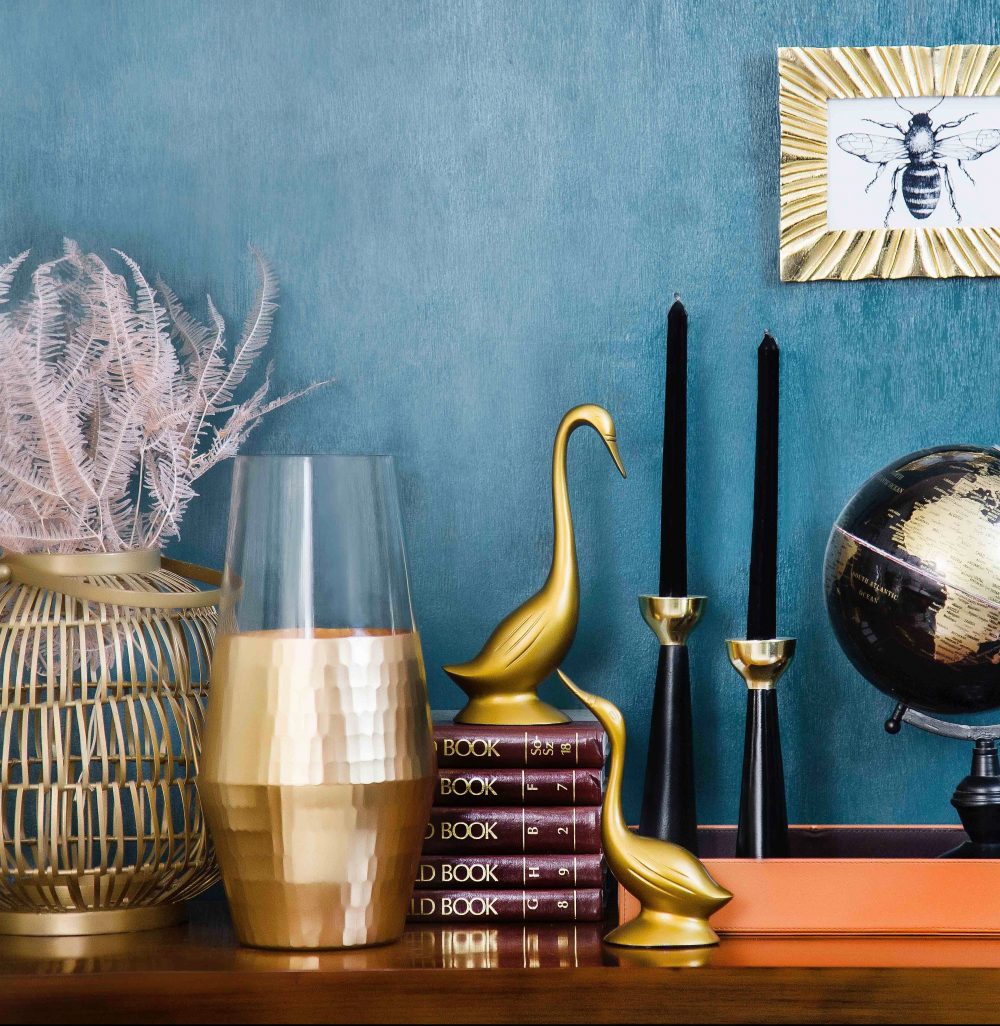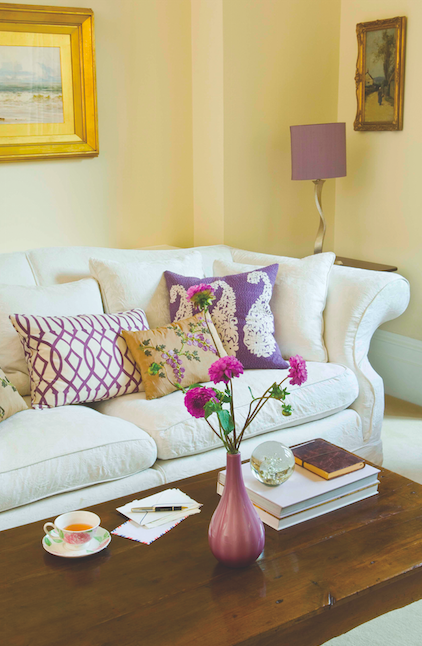Redecorating? Experts say to keep in mind that the days of matching metals used for lighting, cabinet hardware and plumbing are over. Today’s rule: mix it up! When done right, combining colors adds visual interest and depth to a space.
“Mixing metals makes a statement in a room,” says Jennifer Kis, director of marketing communications for Progress Lighting. “It’s not considered unusual anymore, and our customers are comfortable with it and confident about trying it in their homes.”
There’s a simple recipe for success: pick a dominant metal finish for the room and coordinate it with accent metals. Try for a 70/30 ratio.

To easily nail the look, consider starting with a significant fixture that’s already finished in a mixed metal combination. For example, the lighting fixtures from Progress Lighting come finished in mixed metal combinations, such as matte black accented with gold, polished chrome with brushed brass, and even white accented with brushed nickel plus a touch of blue. Then, match cabinet hardware, appliances, plumbing fixtures and accessories to one of the finish colors from the lighting fixture.
When selecting finishes, use contrasting tones. Warm metals such as brushed brass, antique bronze, and gold give a vibrant pop of color when mixed with cool metals like chrome, nickel and silver. And don’t forget black — it is one of the trendiest finishes on the market today, and mixes beautifully with most metal colors.
Take the room’s color palette into consideration. Combine warm metal finishes (like brass, bronze, and copper) with warm hues (like beiges and browns). Use cool metal finishes (such as chrome, nickel and silver) with cool tones (such as blues, greens and grays). For a neutral color palette, add metallic accents to achieve warmth, texture and color. With a white or gray color scheme, for example, add a stunning gold chandelier to make your room come to life.
Kitchens typically contain the most metal in the house, and there are many ways to harmonize elements. Try placing mixed metal pendant lighting over the kitchen island, then match an accent metal finish from the fixture to coordinate with the cabinet and plumbing hardware. For a consistent look, pair finishes on metals that appear within the same line of sight: for example, the sink faucet and cabinet hardware should match.
In bathrooms, blend lighting choices with metallic accessories like a metal-edged mirror, soap dispensers and wall hangings, for seamless style. Lighting finishes don’t have to match hardware, but remember to choose complementary, contrasting metal tones.
Larger spaces, like living and family rooms, are ideal for mixing metal accents. As one of the most significant accessories in the room, start with your lighting fixture. Then add decorative elements — mirrors, wall art, tables — in contrasting metallic tones to make a dramatic statement.
In the bedroom, overhead lighting is often a prominent feature. Choose either a mixed metal fixture or one with a dominant finish color, then select subtle metallic touches for table lamps, sconces, furniture and wall décor to provide a cohesive flow.
For design resources, visit bit.ly/ShopMixedMetals.
Today, metals are meant to be mixed. Keep in mind the 70/30 rule for the perfect mixed, but not mismatched, look.





